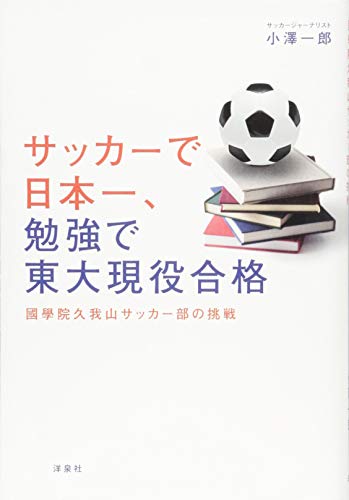- 著者
- 小澤 一郎
- 出版者
- 日本オリエント学会
- 雑誌
- オリエント = Bulletin of the Society for Near Eastern Studies in Japan (ISSN:00305219)
- 巻号頁・発行日
- vol.59, no.1, pp.40-56, 2016
6 0 0 0 OA 露土戦争(1877-78)による小銃拡散と「武装化」:火器史の「近代」の解明に向けて
- 著者
- 小澤 一郎
- 出版者
- 日本中東学会
- 雑誌
- 日本中東学会年報 (ISSN:09137858)
- 巻号頁・発行日
- vol.32, no.1, pp.119-148, 2016-07-15 (Released:2018-06-01)
In this article, the author studies the arming of the Ottoman-Iranian Borderland after the Russo-Ottoman War (1877-78), as an attempt to clarify the significance of the “modern age” in the history of firearms. The Russo-Ottoman War gave rise to the diffusion of Martini-Peabody rifle in the Borderland, the impact of which can be discerned from Sheikh ‘Obeyd allāh’s revolt in 1880 and the destabilization of the regional security in the 1880s and 1890s. On the other hand, the Qajar irregular forces armed with those rifles displayed their own importance, and the Qajar dynasty attempted to utilize “modern” arms spread in the region by mobilizing these irregulars. This attitude seems to have been related to the general military policy of the Qajar dynasty in the age. Reacting to the arming of the Borderland, indigenous gunsmiths attempted to produce the imitations or to reuse metal cartridges locally, showing the indigenous technological level of arms production. Finally, the author suggests that these developments prepared the ground for the later historical developments including the Constitutional Revolution and the conflicts between various ethnic groups in the region in the WWI period.
- 著者
- 小澤 一郎
- 出版者
- 日本中東学会
- 雑誌
- 日本中東学会年報 (ISSN:09137858)
- 巻号頁・発行日
- vol.32, no.1, pp.119-148, 2018-06-01
In this article, the author studies the arming of the Ottoman-Iranian Borderland after the Russo-Ottoman War (1877-78), as an attempt to clarify the significance of the "modern age" in the history of firearms. The Russo-Ottoman War gave rise to the diffusion of Martini-Peabody rifle in the Borderland, the impact of which can be discerned from Sheikh 'Obeyd allāh's revolt in 1880 and the destabilization of the regional security in the 1880s and 1890s. On the other hand, the Qajar irregular forces armed with those rifles displayed their own importance, and the Qajar dynasty attempted to utilize "modern" arms spread in the region by mobilizing these irregulars. This attitude seems to have been related to the general military policy of the Qajar dynasty in the age. Reacting to the arming of the Borderland, indigenous gunsmiths attempted to produce the imitations or to reuse metal cartridges locally, showing the indigenous technological level of arms production. Finally, the author suggests that these developments prepared the ground for the later historical developments including the Constitutional Revolution and the conflicts between various ethnic groups in the region in the WWI period.
- 著者
- [ジェームズ・ラットレー画] 東京外国語大学アジア・アフリカ言語文化研究所編 小澤一郎 登利谷正人翻訳
- 出版者
- 東京外国語大学アジア・アフリカ言語文化研究所
- 巻号頁・発行日
- 2007
1 0 0 0 都市再生における都市計画と都市計画家の役割
- 著者
- 小澤 一郎
- 雑誌
- 都市計画 (ISSN:04959280)
- 巻号頁・発行日
- vol.54, no.6, 2005-12-25
1 0 0 0 IR 19世紀前半のイランとイギリス製小銃
- 著者
- 小澤 一郎
- 出版者
- 東洋文庫
- 雑誌
- 東洋学報 : 東洋文庫和文紀要 (ISSN:03869067)
- 巻号頁・発行日
- vol.95, no.3, pp.354-329, 2013-12
- 著者
- 小澤 一郎
- 出版者
- 日本中東学会
- 雑誌
- 日本中東学会年報 = Annals of Japan Association for Middle East Studies (ISSN:09137858)
- 巻号頁・発行日
- no.32, pp.119-148, 2016
- 著者
- 小澤 一郎
- 出版者
- 一般社団法人 日本オリエント学会
- 雑誌
- オリエント (ISSN:00305219)
- 巻号頁・発行日
- vol.59, no.1, pp.40-56, 2016
<p>The arms trade in the Persian Gulf experienced a drastic expansion in the mid-1890s, and emerged as an important issue for the polities around the Gulf. This study investigated the factors giving rise to and sustaining this trade. Analysis was conducted from the perspective of the attempts of the Qajar dynasty of Iran to suppress the trade on the Gulfs northern shore.</p><p> The Qajar government's initial suppressive attempts remained unsuccessful, revealing the two factors sustaining the trade: first, the complicated interests within the Qajar government concerning the profits from the trade, and second, the difficulty in regulation that arose from the trade's international nature, namely, the existence of Muscat as a "loophole." This situation led the Qajar government to cooperate with the British Empire. Besides strengthening the existing suppressive measures, the Qajar government permitted the British Navy's activities in its territorial waters. Furthermore, a joint Qajar-British request was communicated to the Muscat government in December 1897 asking for the introduction of more effective suppressive measures. However, the joint request did not bring about the expected result, although the various interests within the Qajar government had been reconfigured and ceased to promote the arms trade by that time. This was probably due to the trade's economic importance for the Muscat government, the Muscat government's treaty obligations to the other great powers, and the noncooperation of France. This failure guaranteed the continuation of the trade itself, which became less visible and accelerated the influx of modern arms into southern Iran.</p><p> In conclusion, the author asserts that the development and the failure of the measures taken to suppress the Persian Gulf arms trade reflected not only the characteristics of the arms trade, but also the nature of the regional order of the Persian Gulf at that time.</p>
首都直下地震対策が緊急の課題である現在、世界に多大な影響力を持つ東京の企業の業務中枢機能を維持することが重要である。ミュンヘン再保険会社が発表した都市のリスク指数では、東京の危険度は710と他の都市の高くても100前後という値に比べて非常に高く、国際的に東京の危険性が危惧され、今後東京での国際的企業の経済活動が阻害される恐れがある。現在国際的に行政のみならず民間企業も地震リスクに対策を行うことが必要とされている。特に中央防災会議首都直下地震専門対策委員会においても、企業が災害時に重要業務を継続するためのBCP(事業継続計画)の策定を行うことが必要と報告されている。しかし日本の企業の地震リスク対策は不十分であり、ここ30年以内に起こる可能性の高い首都直下地震による多大な被害も懸念される。そこで企業が具体的にこれらの地震リスクを低減し事業継続を行なうための防災投資の提案を行う必要がある。都市の防災基盤整備としての安全街区構築のためのスキーム検討として、新たな保険制度の提案を目指して下記項目について検討を進めた。BCPのISO化や、企業統治の一環として企業の一層の危機管理が求められる中で、都市のライフラインや建築の設備系統を強固に整備して、特別に信頼性を高めた地域を、日本独自の「安全街区」として提案する。こうした「安全街区」が実現した場合の、安全街区内の高い仕様の建物について、地震利益保険や再保険市場での査定、あるいは不動産投資市場における評価への影響について調査を行った。また海外への研究発表に重点をおいて研究活動を進めた。また、環境と防災両面に資する「都市環境インフラ」の構築に向けての包括的な概念検討を継続して進めており、関連の実測調査や現地調査、文献調査を組み合わせ、今後の研究展開に資する基盤的な要素について幅広く検討を行い成果を得た。研究は、1.人工系都市基盤・都市インフラに関連する研究、2.都市内自然資本に関連する研究、3.各都市の基礎調査、4.安全・安心確保のための関連事例等の基礎調査に分類される。関連する社会的な要求を背景に、意義ある研究を行うことができた。研究助成に御礼申し上げる次第である。

